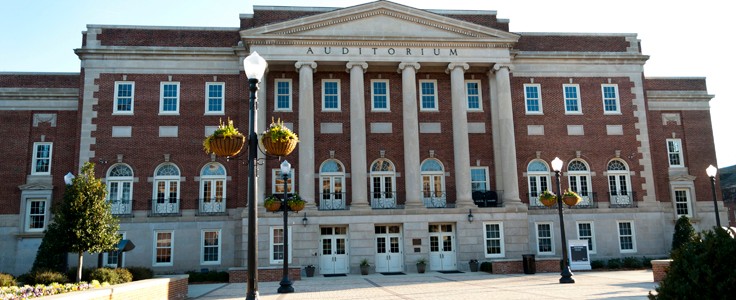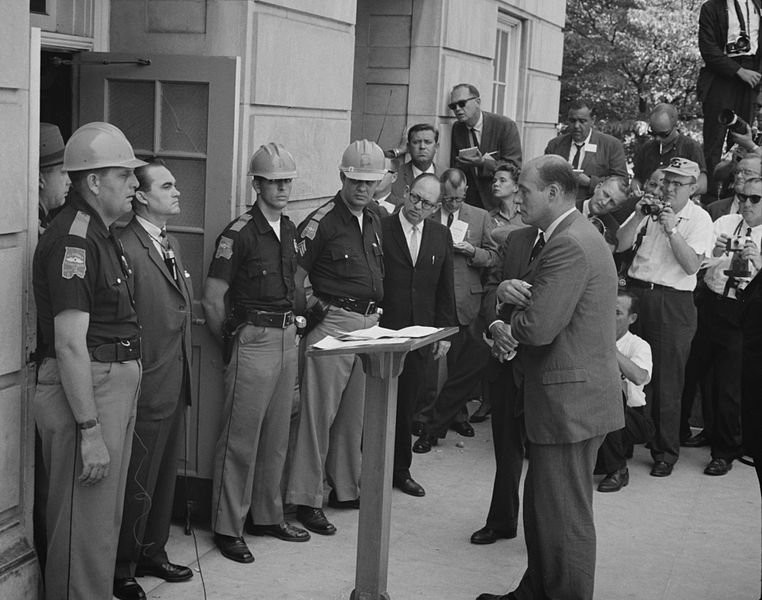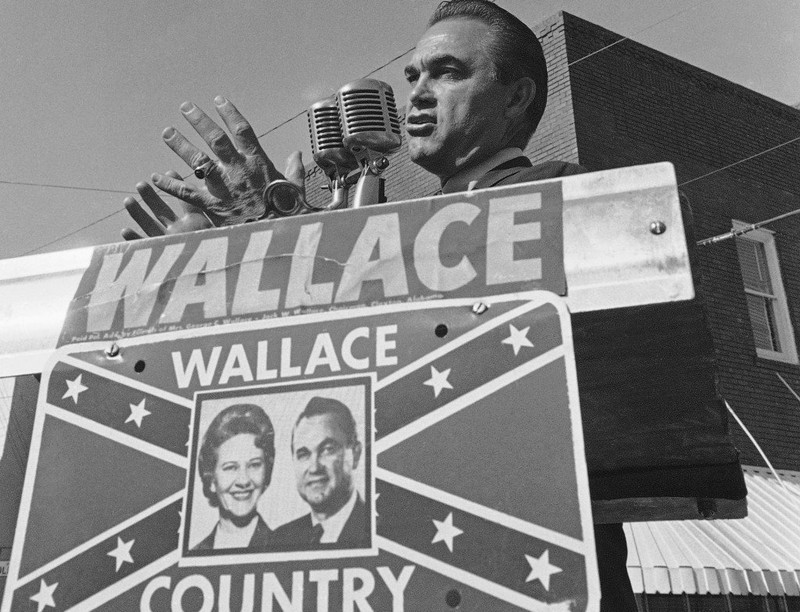Foster Auditorium, University of Alabama
Introduction
Text-to-speech Audio
Images
On June 11, 1963, Foster Auditorium was the site of one of the key events of the Civil Rights movement, in which Alabama's governor, George Wallace, temporarily blocked two Black students from enrolling.

The confrontation between George Wallace and Deputy U.S. Attorney General Nicholas Katzenbach, who was tasked by President Kennedy for force Wallace to step aside.

George Wallace and other opponents of integration made the Confederate flag their emblem throughout the civil rights movement of the 1950s and 1960s.

Backstory and Context
Text-to-speech Audio
Governor Wallace was elected governor in 1962 after losing the 1958 governor’s race to John Patterson who had run with the support of the Ku Klux Klan. Understanding that Patterson had defeated him because of his hateful rhetoric against African Americans, Governor Wallace matched Patterson's rhetoric in 1962 and campaigned on a promise to maintain segregation. Given the threats of violence against would-be Black voters, candidates that supported segregation usually carried the nearly all-white elections held in the Deep South up until this time.
In his inaugural speech Governor Wallace promised "segregation forever" despite federal laws and court orders requiring the state to end segregation in schools and colleges. The University of Alabama was ordered by the courts to admit two qualified African Americans in June of 1963. However, Governor Wallace vowed these two young people would never be admitted. Taking a cue from their governor, members of the Ku Klux Klan descended on the university waving Confederate flags and vowing to kill any African American who attempted to integrate the university.
Despite threats to their lives, the two African Americans attempted to register for classes but found that they were physically blocked by Governor Wallace himself. The governor blocked the door along with two state troopers and vowed to defy the court order. In response to this direct challenge to the rule of law, President Kennedy federalized the National Guard and ordered them to force the desegregation of the University. On June 11, 1963 both the students were registered for classes.
The building is named after Richard Clarke Foster, president of the university form 1937-1941. It was built in 1939. As it was the largest indoor university building until 1968, the auditorium has been the location of sporting events, graduations, and of course, registration. It is currently used for women's volleyball and basketball games.